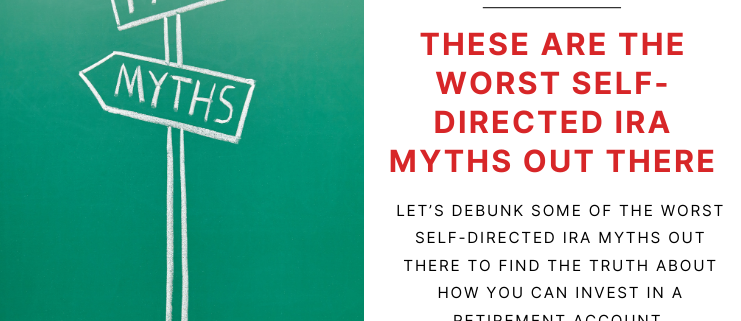These are the Worst Self-Directed IRA Myths Out There
Myths and fact. Too often online, the line between these two concepts is blurred. That’s particularly true in Self-Directed IRAs. Because many investors don’t know about Self-Directed IRAs, it’s easy for myths to propagate. And if you don’t know the difference between truth and fiction, it can be difficult to suss out what’s real from what’s not. So let’s debunk some of the worst Self-Directed IRA myths out there to find the truth about how you can invest in a retirement account.
Myth #1: Self-Directed IRAs are Illegal or Uncommon
One of the most persistent myths about Self-Directed IRAs That they are either illegal or rarely used. This makes investors feel skeptical far too early.
And, yeah, it couldn’t be further from the truth. Self-Directed IRAs are perfectly legal retirement accounts sanctioned by the IRS. They simply allow for a broader range of investment options beyond traditional stocks, bonds, and mutual funds. In fact, millions of Americans use Self-Directed IRAs to invest in real estate, precious metals, private equity, and other nontraditional retirement assets. Why not? It’s a perfectly legitimate way to invest. While these assets may not be as widely advertised as traditional IRAs, they are growing option for investors looking to diversify retirement portfolios.
Myth #2: Self-Directed IRAs Require Specialized Knowledge
Another misconception is that managing a Self-Directed IRA requires specialized investment knowledge. You don’t have to be an expert. Yes, it’s true that investing in alternative assets like real estate or private equity requires some understanding of those markets. But the same could be said for any type of investment. Self-Directed IRAs don’t mandate that investors be experts; rather, they empower investors to make choices based on their own research and experience.
Additionally, custodians of Self-Directed IRAs often provide educational resources and guidance to help investors navigate their options effectively. So you can lean on people around you as you make these investments.
Myth #3: It’s Tough to Find a Custodian for Self-Directed IRAs
Finding a custodian for a Self-Directed IRA can be challenging, sure. But this myth is misleading. While not all financial institutions offer Self-Directed IRA services, there are reputable custodians across the country who can help you get started.
These custodians are regulated. They’re often experienced in handling the unique requirements of Self-Directed IRAs, such as holding alternative assets and ensuring compliance with IRS rules. And they’re full of friendly people who can help. Investors can choose from a variety of custodians based on factors like fees, customer service, and investment offerings. Once you find a custodian like American IRA, you’ll see it’s not too hard to find someone to suit your needs. In fact, you may prefer it over the traditional method of investing.
Myth #4: Self-Directed IRAs Offer Some Investments With “Guaranteed” Returns
Some mistakenly believe that Self-Directed IRAs offer investments with guaranteed returns. In reality, no investment is entirely risk-free. Legitimate investments are never risk-free. And that includes those within a Self-Directed IRA. While certain assets like government bonds or certificates of deposit (CDs) may offer relatively stable returns, they are not immune to economic changes or inflation. Most investments within a Self-Directed IRA involve varying degrees of risk and potential reward, depending on market conditions and the chosen asset class. It’s essential for investors to conduct thorough research and consider their risk tolerance before making investment decisions.
Interested in learning more about Self-Directed IRAs? Contact American IRA, LLC at 866-7500-IRA (472) for a free consultation. Download our free guides or visit us online at www.AmericanIRA.com.








